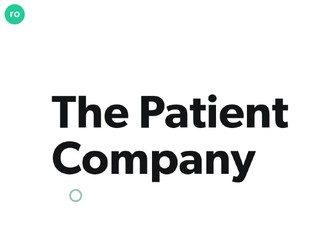Digital health funding declines for the third year in a row
AI-enabled digital health startups raised $3.7B, 37% of total funding for the sector
Read more... GLP-1s have exploded in popularity, to the where, according to the Kaiser Family Foundation, 12% of adults has taken Ozempic or another GLP-1 drug. Not surprisingly, this has led to a worldwide shortage in these medications, such as Ozempic, Mounjaro, Trulicity, and Rybelsus, over the last two years.
GLP-1s have exploded in popularity, to the where, according to the Kaiser Family Foundation, 12% of adults has taken Ozempic or another GLP-1 drug. Not surprisingly, this has led to a worldwide shortage in these medications, such as Ozempic, Mounjaro, Trulicity, and Rybelsus, over the last two years.
This week, direct-to-patient healthcare company Ro made it easier for those patients to find where to get their meds with the launch of the GLP-1 Supply Tracker, an interactive tool that provides real-time insights on GLP-1 drug shortages, along with automated, localized supply alerts.
Leveraging Ro’s nationwide supply data, along with user-generated reports, and the latest information from the FDA’s Drug Shortage List, patients can use the GLP-1 Supply Tracker to stay up-to-date on GLP-1 availability, sorting by drug, dose, and location. They can also share their own experience with a shortage or finding supply in their area, and submit shortage reports to the FDA.
With the GLP-1 Supply Tracker, anyone can enter the drug, dose, and pharmacy where they found stock of a GLP-1 drug or enter the same information about a pharmacy’s shortage. When a user contributes shortage information to the GLP-1 Supply Tracker, Ro will give them the option of automatically reporting that information to the FDA.
Patients can sign-up to receive automated email alerts for when a GLP-1 drug is reported in supply in their area, or when the status of a GLP-1 drug on the FDA’s Drug Shortage List changes. Alerts notify patients which pharmacy is reported to have supply, including the specific GLP-1 medication and dose, pharmacy’s name, address, and phone number.
The alerts also include instructions for how to request a pharmacy transfer their prescription to the one with supply in stock. Ro’s patients are also able to message their care team any time to request that Ro transfer their prescription on their behalf.
The GLP-1 Supply Tracker is free and open access for any patient, provider, or other healthcare stakeholder.
In addition to the GLP-1 Supply Tracker, Ro also offers compounded GLP-1s to help maintain patients’ access to treatment and continuity of care during the shortage of branded GLP-1s.
The company also helps its users learn if GLP-1 medications are covered by their insurance, so Ro takes on benefits verification and works with a partner to optimize prior authorizations, giving patients treatment options, coverage details, and cost estimates.
“The GLP-1 shortage challenges are exacerbated by a lack of accurate, up-to-date, and accessible GLP-1 supply information. Patients deserve better,” Zachariah Reitano, co-founder and CEO of Ro, said in a statement.
“We originally began building this tracker for Ro patients but knew that our scaled supply data and tech expertise positioned us to help all patients (whether Ro patient or not) navigate the shortage and have a greater chance of finding the GLP-1 medications they need.”
(Image source: ro.co)
AI-enabled digital health startups raised $3.7B, 37% of total funding for the sector
Read more...OXcan combines proteomics and artificial intelligence for early detection
Read more...Nearly $265B in claims are denied every year because of the way they're coded
Read more...